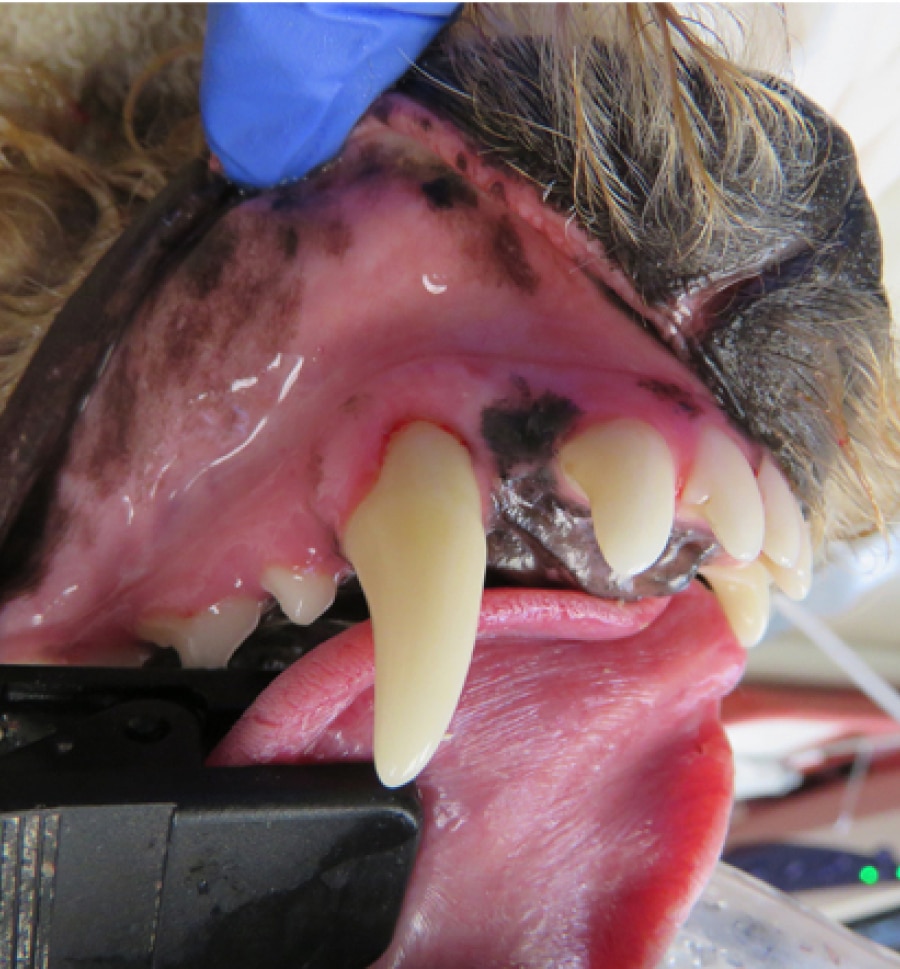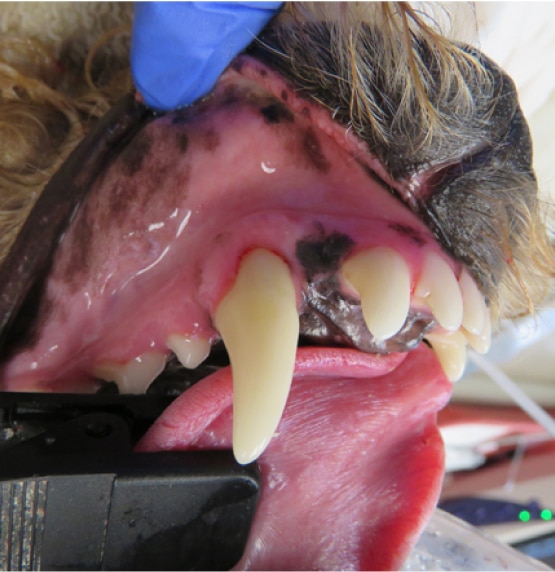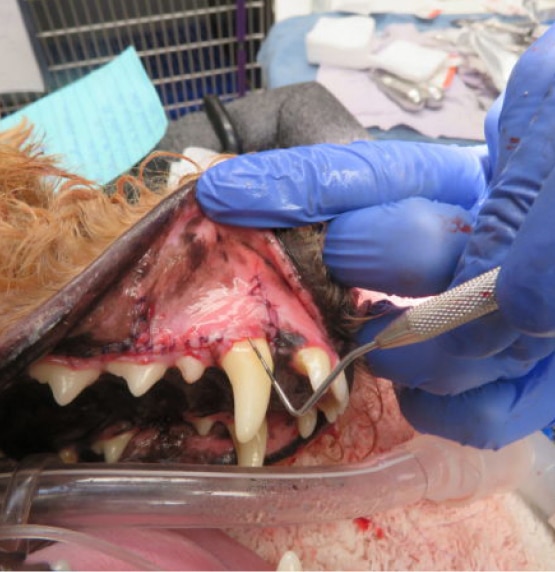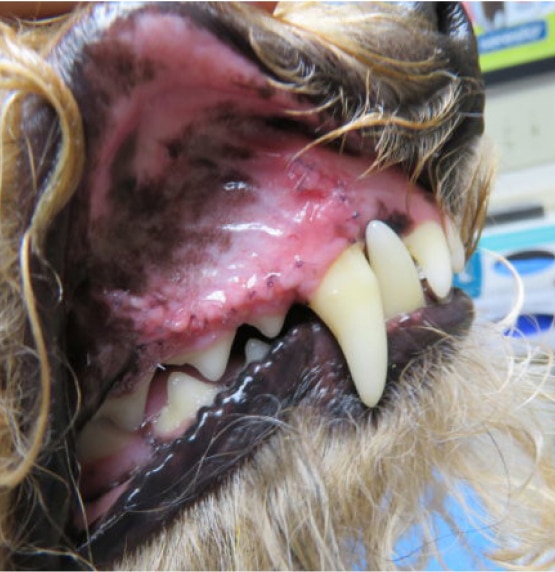Periodontics
Periodontal disease is one of the most common diseases in our canine and feline friends. Periodontal disease begins when bacteria form a substance called plaque which sticks to the surface of the teeth.


Periodontal Problems
Once the plaque is present, minerals in the saliva harden the plaque into dental calculus in about 24-48 hours and is firmly attached to the teeth. Problems develop as plaque and calculus spread under the gum line and bacteria in the plaque causes damage to the supporting tissues around the tooth. This eventually leads to loss of the tooth. Bacteria under the gum line secrete toxins which contribute to tissue and bone loss. This stimulates the animal’s immune system and furthers the local inflammation. Periodontal disease includes gingivitis (inflammation of the gums) and periodontitis (loss of bone and soft tissue around the teeth). A strict oral care regimen at home will hopefully delay the progression of this condition in your pets’ remaining teeth. Here at Minnesota Veterinary Dentistry Specialists, PLLC we recommend a comprehensive dental exam and treatment plan with prophylaxis (dental cleaning) once a year to ensure a healthy mouth for years to come.

Before

After

Headline Here
This is just placeholder text. Don’t be alarmed, this is just here to fill up space since your finalized copy isn’t ready yet. Once we have your content finalized, we’ll replace this placeholder text with your real content.
Sometimes it’s nice to put in text just to get an idea of how text will fill in a space on your website.
Traditionally our industry has used Lorem Ipsum, which is placeholder text written in Latin. Unfortunately, not everyone is familiar with Lorem Ipsum and that can lead to confusion. I can’t tell you how many times clients have asked me why their website is in another language!

Call (218) 461-4825 or book online to schedule your pet’s advanced dental appointment.
Frequently Asked Questions About Periodontics
How can I help prevent periodontal disease in my pet?
Preventing periodontal disease involves a regular oral care routine, including brushing your pet’s teeth and scheduling yearly dental exams and cleanings. These professional cleanings remove plaque and calculus, helping to keep your pet’s mouth healthy and prevent further disease progression.
What are the signs of periodontal disease in pets?
Signs of periodontal disease include bad breath, red or swollen gums, difficulty eating, and loose teeth. If left untreated, the condition can progress to gingivitis (gum inflammation) and periodontitis (loss of bone and tissue around the teeth), potentially leading to tooth loss.
What is periodontal disease in pets, and how does it develop?
Periodontal disease is a common condition in dogs and cats, caused by bacteria that form plaque on the teeth. Over time, the plaque hardens into dental calculus, which spreads under the gum line, leading to inflammation, tissue damage, and eventually, tooth loss.
